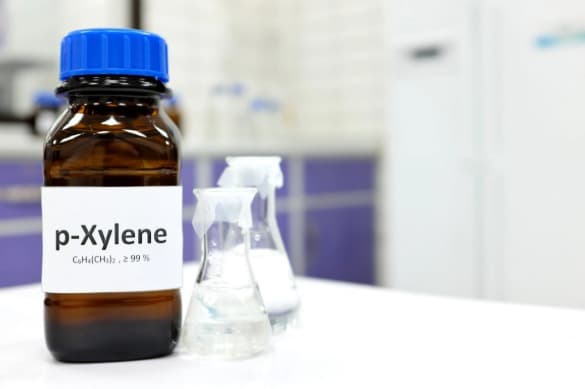What is Xylene Used For?
Xylene is an aromatic hydrocarbon that is widely used in industrial and commercial applications. It consists of three isomers—ortho-xylene, meta-xylene, and para-xylene—each with similar chemical properties but slightly different structures. Known for its excellent solvency, xylene is a clear, colorless liquid with a sweet odor and high flammability. Its versatility makes it an essential chemical across various industries. Let’s explore the primary uses of xylene and why it is so important.

1. Industrial Solvent in Paints and Coatings
One of the most common uses of xylene is as a solvent in paints, varnishes, and coatings. It helps dissolve or disperse other substances, making it easier to apply paint smoothly. Xylene also improves the flow and leveling properties of coatings, which is crucial in achieving a high-quality finish. In addition, it aids in the drying process, ensuring that the coating cures properly.
Xylene is also used in paint thinners and cleaning agents for removing paint residues from equipment, brushes, and spray guns. Its strong solvency helps break down hardened or thickened paint, making it a go-to chemical for painters and contractors.
2. Printing, Rubber, and Adhesive Industries
Xylene serves as a solvent in printing inks, allowing for consistent ink viscosity and improved drying times during high-speed printing operations. In the rubber industry, it helps in the manufacturing of synthetic rubber products by acting as a processing solvent. Similarly, in adhesives, xylene enhances the bond strength by dissolving specific resins and polymers, making it useful in industrial and consumer-grade glues.
3. Cleaning and Degreasing Agent
Because of its ability to dissolve grease, oil, and other residues, xylene is widely used as a cleaning agent in industrial settings. It effectively removes tough contaminants from metal parts, tools, and machinery. Automotive workshops and manufacturing plants often rely on xylene-based solutions for cleaning and maintenance tasks.
4. Laboratory and Chemical Applications
In laboratories, xylene plays a crucial role in histology and pathology. It is used to clear tissue samples during slide preparation, replacing alcohol and making tissues transparent for microscopic examination. Xylene is also a standard solvent in chemical synthesis and analytical procedures because of its stability and strong dissolving properties.
5. Fuel and Energy Sector
Xylene is present in petroleum and fuel blends. It is often used as an additive in gasoline to improve octane ratings, enhancing fuel performance. Additionally, xylene is a raw material in the production of terephthalic acid and dimethyl terephthalate, which are essential intermediates in the manufacturing of polyester fibers and plastics.
6. Paint and Varnish Removers
Apart from being a paint thinner, xylene is also a primary component in paint strippers and varnish removers. It penetrates and softens old coatings, making them easier to scrape off surfaces. This property is especially useful in restoration and remodeling projects.
Safety and Handling Considerations
While xylene is incredibly useful, it is also toxic and flammable, requiring proper handling. Inhalation of xylene vapors can cause dizziness, headaches, and respiratory issues, while prolonged exposure may lead to nervous system effects. Therefore, it should always be used in well-ventilated areas with appropriate personal protective equipment (PPE) such as gloves and masks.
Conclusion
Xylene is a highly versatile chemical with applications in paints, coatings, adhesives, printing, cleaning, laboratories, and fuel additives. Its exceptional solvent properties make it indispensable in numerous industries, but its hazardous nature means it must be handled with care. Whether you’re in construction, automotive maintenance, or scientific research, understanding the role and safe use of xylene is essential.





